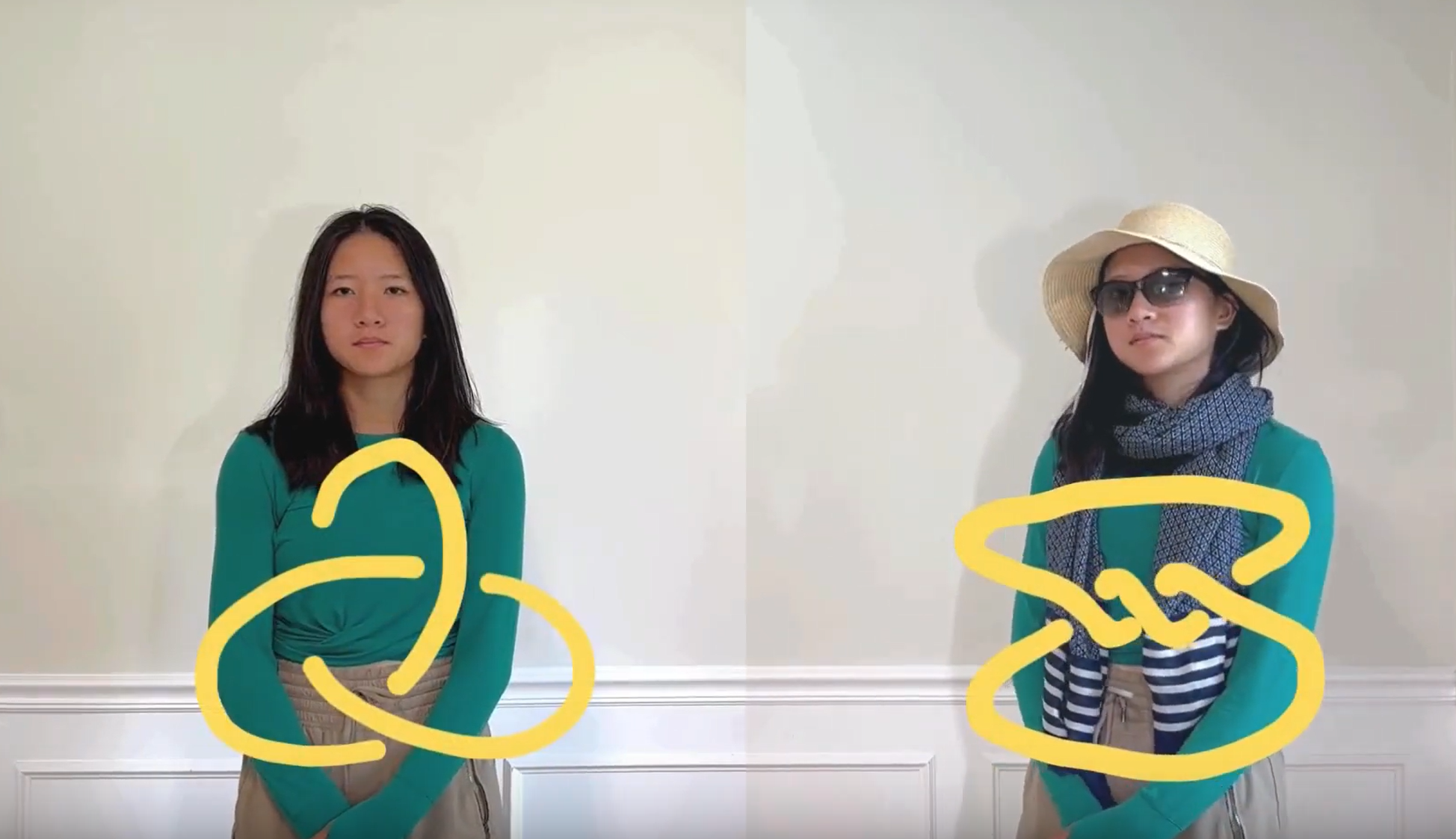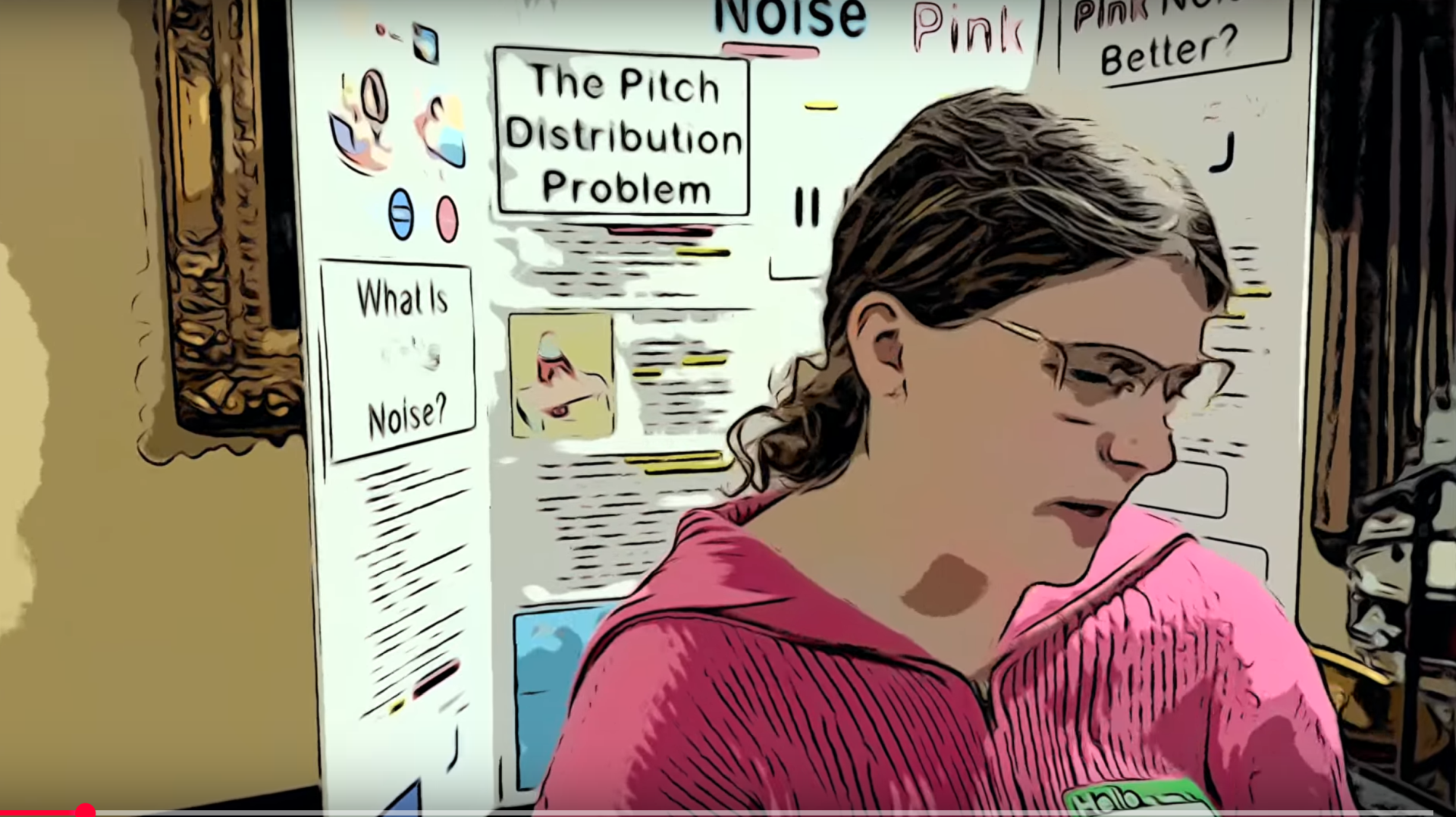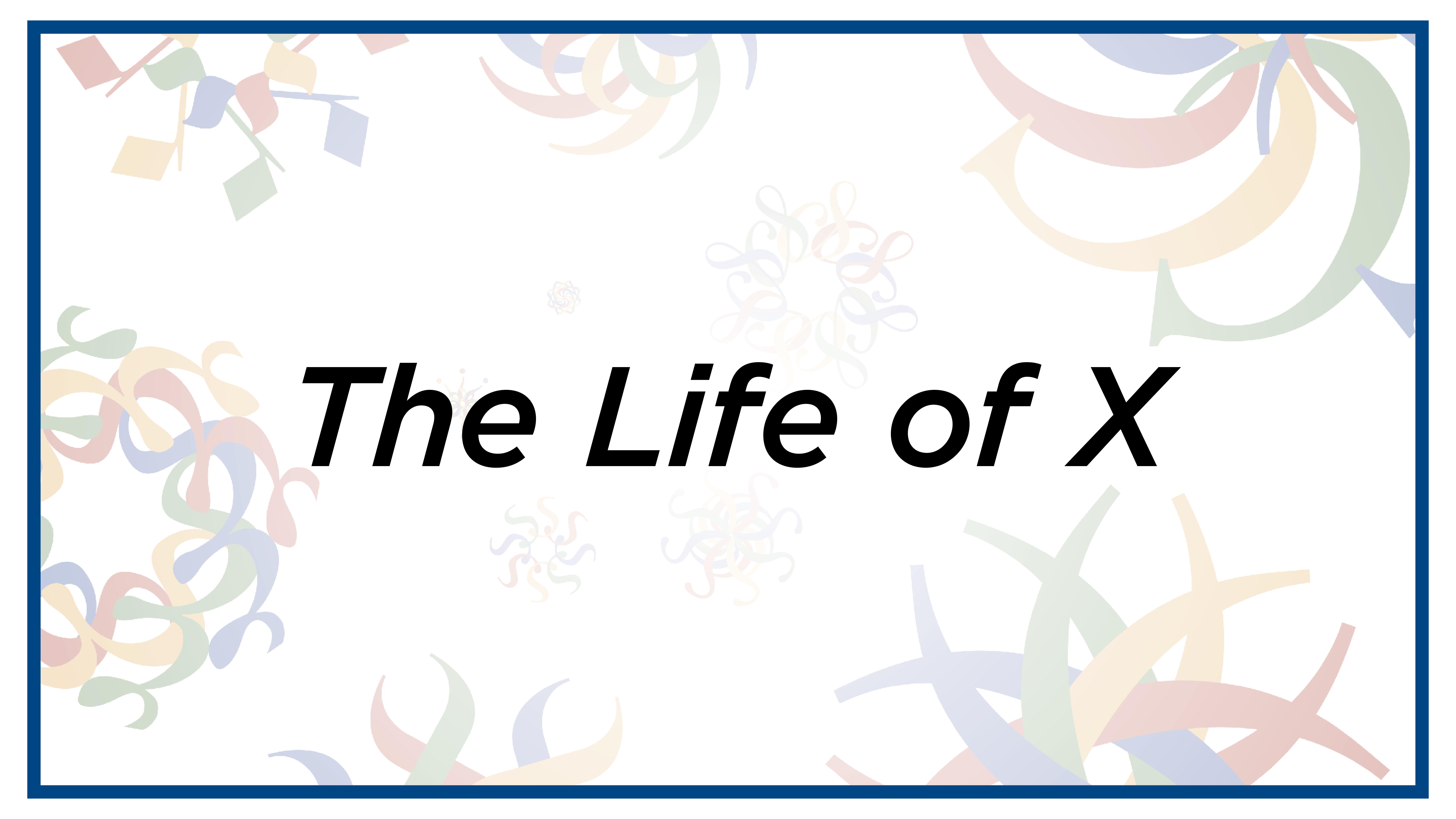NYC Math Festival 2021 — Online!
Saturday, July 17, 2021
Events from 2:00 pm to 6:15 pm ET (New York)

Thank you for your interest in the New York Math Festival 2021. The online festival has ended; however, you may click here to make a tax-deductible donation. Your patronage of the National Museum of Mathematics is deeply appreciated.
MoMath was pleased to present the second annual online NYC Math Festival. Accessible to everyone around the world, this exclusive MoMath offering provided a full schedule of engaging mini-sessions. The festival included some of MoMath’s most popular presenters for a nonstop series of math entertainment, including mathematical games, intriguing puzzles and brainteasers, music, magic, hands-on projects to do at home, and so much more — fun for the entire family!
Featured presenters included:
Alex Kontorovich, David Reimann, Godwyn Morris, Gregory Michel, James McLurkin, Jeanine Meyer, John Urschel, Lauren Rose, Marcus Miller, Mark Mitton, Nira Chamberlain, Paul Zeitz, Steve Sherman, Tim and Tanya Chartier, and Yana Mohanty.
_____________
Schedule of Events
Saturday, July 17
Please note that the schedule is tentative and may be subject to revision.
Click here for event descriptions and materials needed for each event.
| Time | Event |
| 1:45 – 2:00 pm | NYC Math Festival Pre-Show Slideshow |
| 2:00 – 2:15 pm | Let the Math Fun Begin! Cindy Lawrence and Tim Nissen |
| 2:15 – 2:30 pm | Brainteaser Kahoot with Steve Sherman |
| 2:30 – 2:45 pm | The Business Card Frog — it jumps! with Jeanine Meyer |
| 2:45 – 3:00 pm | Fun with Figurate Numbers with David Reimann |
| 3:00 – 3:15 pm | Flexagon Fun and Beyond with Yana Mohanty |
| 3:15 – 3:30 pm | Engineering with Paper: Building Structures with Paper Straws with Godwyn Morris |
| 3:30 – 3:45 pm | Playing with Pebbles* with John Urschel *This session will be pre-recorded. |
| 3:45 – 4:00 pm | 15-minute break |
| 4:00 – 4:15 pm | Scarlet Hexagons and Three-Dimensional Mysteries with Gregory Michel |
| 4:15 – 4:30 pm | Nerf Blaster Mathematics with James McLurkin |
| 4:30 – 4:45 pm | The Mathematics of Johann Sebastian Bach with Marcus Miller |
| 4:45 – 5:00 pm | Three’s a Crowd: A game of QUADS with Lauren Rose |
| 5:00 – 5:15 pm | Mime-matics with Tim and Tanya Chartier |
| 5:15 – 5:30 pm | Approximately right, three times with Paul Zeitz |
| 5:30 – 5:45 pm | Math, Gags, & Magic with Everyday Objects with Mark Mitton |
| 5:45 – 6:00 pm | The Monte-Carlo Simulation and the Pirates of the Caribbean with Nira Chamberlain |
| 6:00 – 6:15 pm | Thoughts and Reflections on Mirrors with Alex Kontorovich |
_____________
Descriptions
The Brainteaser Kahoot
Get ready to take part in a wacky and zany brainteaser Kahoot featuring the one-and-only Steve Sherman. This fast-paced series of puzzlers will tickle your brain-strings and challenge your thinking skills. All ages are welcome: some of the brainteasers will be easy while others will really make you think — there might even be some sneaky surprises thrown in. Do you have what it takes to be a champion?
Materials needed: Smart phone, tablet, or personal computer with internet access. Either download and open the Kahoot app or open a browser, go to Kahoot.it and await your Pin number
The Business Card Frog — it jumps!
Create an amazing jumping frog using only a business card! This easy-to-fold model is such fun, you’ll want to make a whole family of active amphibians. Jeanine Meyer helps everyone jump right in for some folding fun.
Materials needed: Business card, index card, an insert typically found in magazines, or any rectangle that is not a square. Bring different types and sizes of paper and we can make the model at least two times.
Fun with Figurate Numbers
Positive (whole) numbers can be visually represented by a geometric arrangement of items. For example, square numbers like 4, 9, and 16 can be represented by a square grid of items. Can other geometric arrangements also be created, perhaps including triangles, hexagons, and even stars? Join David Reimann for an interesting exploration of how relationships among numbers can create some very interesting geometric patterns.
Optional materials: 25 or more counting tokens such as pennies.
Flexagon Fun and Beyond
In this novel approach to a simple flexagon (similar to a traditional “fortune-teller” model but more fun), Yana Mohanty helps us discover how this folded model is related to both a cutting-edge airplane wing and a magic trick you can make yourself! Join us to see how you can reuse things lying around at home to make something that illustrates some powerful STEM principles.
Materials needed: Scissors, tape, and printed handout; print handout from tritetraflexagon.momath.org onto one sheet of 8.5” x 11” (letter size) card stock paper (or manila folder cut to 8.5” x 11″).
Engineering with Paper: Building Structures with Paper Straws
Godwyn Morris shows us how to use paper, tape, scissors, and a pencil or dowel to create sturdy building straws — and then to use those straws to create a bowl, a playground for a doll, a stepstool, and much more.
Materials needed: ten or more sheets of soft paper (copy paper or magazine/catalog paper), scissors, tape (masking tape is best but scotch tape will do), and a round (not hexagonal) pencil or similar dowel or rod. Also helpful (but not essential) is a piece of cereal box cardboard.
Playing with Pebbles*
MIT Math PhD candidate and former NFL professional John Urschel shares his love of puzzles growing up, introduces an interesting game, and asks a few mathematical questions along the way!
*This session will be pre-recorded.
Scarlet Hexagons and Three-Dimensional Mysteries
Hexagons are highly symmetric shapes that appear throughout nature in honeycombs and other two-dimensional tiling patterns. However, in three dimensions, hexagonal patterns are much scarcer. Come join Gregory Michel as we explore the mysteries of hexagonal shapes in three dimensions — and discover a surprising and marvelous connection to one of 2021’s most popular new television shows.
Materials needed: 12 regular hexagons cut out from hexagons.momath.org and tape.
Nerf Blaster Mathematics
Engineer James McLurkin demonstrates the mathematics behind Nerf Blasters. (Actually, it’s really just an excuse to sneak in a talk about engineering.) See how calipers, an optical break-beam sensor, an oscilloscope, an HP engineering calculator, and an Arduino computer with an OLED display can be used to measure the speed of Nerf darts. Also…there will be some math!
The Mathematics of Johann Sebastian Bach
Jazz saxophonist Marcus Miller analyzes a Bach piece (sinfonia number 13) and shows its relationship to the golden ratio, also known as “phi.” Learn a little bit about the math of phi, hear how this relates to the music of Bach’s time, and dive more deeply into the piece with Marcus as your guide. All that is needed is an open mind!
Three’s a Crowd: A game of QUADS
Join SET® expert Lauren Rose as she introduces a card game similar to SET®, but with a twist. A QUAD consists of a four cards satisfying a certain pattern. If only three cards satisfy the pattern, it’s not a QUAD…hence, Three’s a Crowd. If you love SET®, this is a session you won’t want to miss!
Materials needed: A regular deck of cards and use the 16 cards A, 2, 3, and 4 of each suit.
Mime-matics
In Mime-matics, Tim and Tanya Chartier explore mathematical ideas through the art of mime. See how mime can visualize the often invisible world of mathematics. Learn a bit about this intriguing performance art as you become your own mathematical mime!
Materials needed: All you need is yourself and a willingness to make the invisible visible!
Approximately right, three times
Enjoy three different simple (but fun!) activities where you can “almost perfectly” do something. Paul Zeitz helps us almost get there as we double your fun with a rubber-band pantograph, constructe a tetrahedron to decorate your desk, and form equilateral triangles using only a strip of paper.
Materials needed: At least three identical rubber bands, a pencil and paper, several business cards, and a strip of paper (e.g., 1″ wide and 10″ long, or adding machine paper, etc.)
Math, Gags, & Magic with Everyday Objects
Mark Mitton presents Martin Gardner’s “Math, Gags, & Magic with Everyday Objects.” Learn how math, gags, and magic might be more related than you can imagine!
Materials needed: pen or pencil, one piece of paper, 16-20 coins or 16-20 small pieces of paper, and space on a table to play.
The Monte-Carlo Simulation and the Pirates of the Caribbean
There are some calculations too complicated for even established mathematicians to solve. In these cases, mathematicians turn to a simple but powerful technique called the Monte-Carlo Simulation. Nira Chamberlain explains the Monte-Carlo Simulation with the help of a Pirate of the Caribbean!
Materials needed: A calculator, pen/pencil, and paper.
Thoughts and Reflections on Mirrors
Who doesn’t love to play with mirrors, the more the merrier (that’s why it’s called a Fun House)?! Close out this year’s online NYC math festival with MoMath’s popular visiting professor, Alex Kontorovich, and discover that there’s plenty of deep, surprising mathematics lurking inside this everyday object. Let’s play!
Materials needed: Paper and something to write/draw with.
_____________
Space in this year’s NYC Math Festival is limited. Registration will be available on a first-come, first-served basis. One price is good for all family members who reside in a single household and who will watch from a single computer connection, and all attendees may enter and exit events throughout the day.
Don’t forget to take home a little bit of MoMath from Additions, the online shop at MoMath, with expert shopping consultation available for all your mathematical gift needs.
Please note that this is an online-only event; all registrants will be participating remotely. While MoMath strives to provide video recordings whenever possible, video recordings may not become available due to copyright, author, and publicist permissions.













